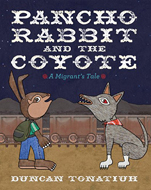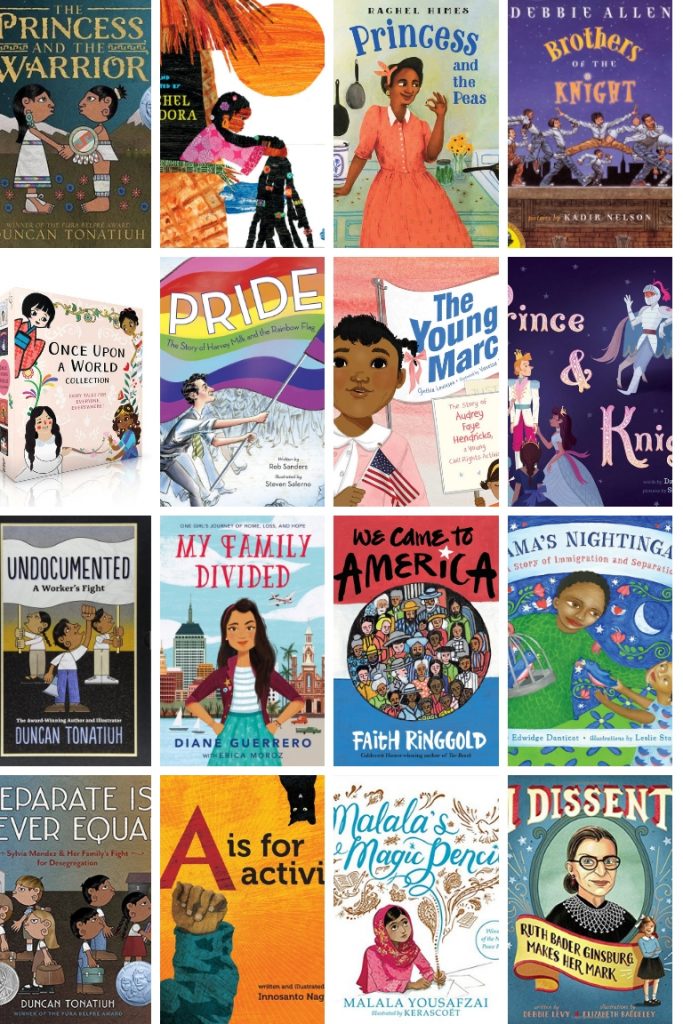This blog was written by Carmen Lugo Llerena, an early childhood education teacher in New York City’s public schools and a Trustee of the NCTE Research Foundation.
As I setup my classroom library for the upcoming school year, and Banned Book Week 2018 approaches, I am reflecting on the literary choices I have made for my students throughout the years. More specifically, I am wondering if I have been complicit, inadvertently or otherwise, in perpetuating the practice of silencing voices that tell the stories my students need to hear and read the most. After all, teachers are the gatekeepers to their classroom libraries. Will my students, whom I have yet to meet, see themselves and their lived experiences in the books I have meticulously sorted by reading levels, genres, authors, topics, and themes? Like countless teachers at some point, I have been expected to adhere to a Eurocentric curriculum, but have I done enough to provide the counter narrative to decolonize a curriculum that privileges a select few and minoritizes most of my students?
Eurocentric curriculum is the norm throughout so many of our schools, resulting in children from minoritized communities not seeing their racial, ethnic, cultural, religious, and gender identities represented in an authentic and current manner, if at all. This fact is all the more dire when we consider that over half of the students enrolled in American public schools are children of color, and according to the National Center for Education Statistics (2016), these numbers are expected to steadily rise. Disheartening as well is that published children’s books do not mirror this rising trend either. The Cooperative Children’s Book Center of the School of Education at the University of Wisconsin–Madison reports that out of 3,700 books received in 2017, only 938 books were about people of color and of those, only 550 were written by authors of color (2018).
Sadly, some teachers are not woke to the Whitewashing of curricula and books in their classroom libraries. Even if they are, they may feel apprehensive about engaging students in dialogue outside of the parameters of the mandated curriculum, as conversations stemming from counter narratives with children are often unpredictable and unsettling. Teachers may also lack confidence in their ability to facilitate conversations about revisionist history and social justice, fear opposition from parents and administrators, or worry about time constraints. However, we must be mindful of the unintended consequences of what Adichie (2009) refers to as the single story: “ . . . show a people one thing, as only one thing, over and over again, and that is what they become,” should we chose not to overcome our own fears and, dare I say, our own biases.
Providing my students with the counter narrative to a Eurocentric curriculum has been an ongoing process for me. One of the ways I have been able to do so is by thoroughly learning and understanding both the objectives of each unit of study and the Common Core Standards for my grade. This knowledge is helpful because it allows me to choose texts that challenge the single story while also meeting the objectives and standards mandated by the curriculum. For example, in a literacy and social studies unit on immigration, students were expected to describe the connections between a series of historical events in a nonfiction/informational read-aloud while also meeting Common Core Standard RL.2.3: Describe how characters in a story respond to major events and challenges (Core Knowledge Foundation, 2013).
One of the prescribed texts was about a young man’s journey from Germany to the United States in 1889. The illustrations accompanying the text depicted characters that did not reflect the race, culture, or heritage of the majority of my students. My students were not particularly engaged during the read-aloud until they noticed the Statue of Liberty in an illustration toward the end of the text. This sighting prompted enthusiastic dialogue among my second graders about their own experiences viewing or visiting the Statue of Liberty, yet very few of these conversations could be attributed  to the actual text in the story. In contrast, we read Pancho Rabbit and the Coyote: A Migrant’s Tale by Duncan Tonatiuh, which was not part of the curriculum but provides a counter narrative to the immigration experience depicted in the Eurocentric curriculum. Tonatiuh’s book portrays the hardships undocumented immigrants endure, such as border crossing exploitation and separation of families, reflecting our current political climate and the experiences of minoritized students affected by immigration policy in our school community. Reading this book together provided all of my students with a safe space to ask questions, express their fears, and share their hopes for a more compassionate world. We also met the unit goals and academic standards.
to the actual text in the story. In contrast, we read Pancho Rabbit and the Coyote: A Migrant’s Tale by Duncan Tonatiuh, which was not part of the curriculum but provides a counter narrative to the immigration experience depicted in the Eurocentric curriculum. Tonatiuh’s book portrays the hardships undocumented immigrants endure, such as border crossing exploitation and separation of families, reflecting our current political climate and the experiences of minoritized students affected by immigration policy in our school community. Reading this book together provided all of my students with a safe space to ask questions, express their fears, and share their hopes for a more compassionate world. We also met the unit goals and academic standards.
Certainly, decolonizing a Eurocentric curriculum may seem like a daunting endeavor. However, failure to provide our students with a counter narrative to a Eurocentric curriculum only perpetuates the stereotypes of the single story and continues to silence minoritized students.
Counter Narratives to Eurocentric Curriculum
Fairy Tales
The Princess and the Warrior by Duncan Tonatiuh
Rapunzel by Rachel Isadora
The Princess and the Peas by Rachel Himes
Brothers of the Knight by Debbie Allen
Once Upon a World Collection by Chloe Perkins
Prince and Knight by Daniel Haack
Immigration
Pancho Rabbit and the Coyote: A Migrant’s Tale by Duncan Tonatiuh
Dreamers by Yuyi Morales
Undocumented: A Workers Fight by Duncan Tonatiuh
My Family Divided by Diane Guerrero
We Came to America by Faith Ringgold
Mama’s Nightingale: A Story of Immigration and Separation by Edwidge Danticat, illustrated by Leslie Staub
Activism
Separate Is Never Equal: Sylvia Mendez & Her Family’s Fight for Desegregation by Duncan Tonatiuh
The Youngest Marcher by Cynthia Levinson
A is for Activist by Innosanto Nagara
Malala’s Magic Pencil by Malala Yousafzai
I Dissent: Ruth Bader Ginsburg Makes Her Mark by Debbie Levy
Pride: The Story of Harvey Milk and the Rainbow Flag by Rob Sanders
References
Adichie, C. N. (2009). The danger of a single story. [Video File]. Retrieved from https://www.ted.com/talks/chimamanda_adichie_the_danger_of_a_single_story
Core Knowledge Foundation. (2013). Core knowledge language arts, listening & learning, and tell it again! Retrieved from http://mc-14193-39844713.us-east-1.elb.amazonaws.com/resource/grade-2-listening-learning-domain-11-anthology-immigration
National Center for Educational Statistics. (2016). Table 203.50: Enrollment and percentage distribution of enrollment in public elementary and secondary schools, by race/ethnicity and region. Retrieved from https://nces.ed.gov/programs/digest/d16/tables/dt16_203.50.asp
Cooperative Children’s Book Center. (2018). Children’s Books By and About People of Color and First/Native Nations Received by the CCBC* 2002 – . Retrieved from http://ccbc.education.wisc.edu/books/pcstats.asp

Carmen Lugo Llerena is an early childhood education teacher in New York City’s public schools. Her professional interests focus on culturally relevant classroom practices and children’s play as a site for curriculum and inquiry. She currently serves as Trustee of the NCTE Research Foundation.

